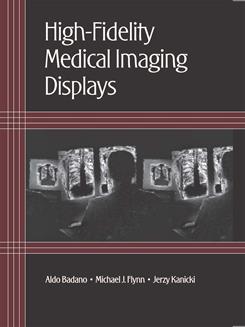
This will count as one of your downloads.
You will have access to both the presentation and article (if available).
Methods: We describe a spatiotemporal image perception model with static and dynamic signal and noise configurations. The 3D spatiotemporal noise is decomposed into 2D spatial noise and time-dependent noise with motion. The noise in the temporal domain is categorized into time-invariant fixed pattern noise (FPN) and temporal noise that varies per display frame. Visual integration of the moving signal and noise emulates the spatiotemporal image perception of dynamic detection targets in a smooth-pursuit event. A target detection model is implemented to compute the detectability of both low-contrast and high-resolution signal-known-exactly/background-known-exactly (SKE/BKE) targets in various static and dynamic imaging configurations using a non-pre-whitening model observer with eye filter (NPWE).
Results: Smooth pursuit of a moving target suppresses the high-frequency dynamic resolution and noise in the orientation tangential to the motion trajectory. For the dynamic signal and noise configuration, the reduction of both resolution and high-frequency noise results in similar target detectability compared to the reference static image perception. On the other hand, the visibility of a moving target with static FPN is enhanced due to noise aliasing. Visual integration for approximately 33 ms of time-variant temporal noise at 90 Hz display refresh rate reduces the effective noise compared to the FPN by temporal fusion of noise in neighboring display frames.
Conclusion: Spatiotemporal integration of dynamic signal and noise can potentially affect image quality. Complete assessment of image quality in MXR devices needs to consider the contributions from 3D spatiotemporal characteristics.
This hands-on workshop follows SC771 Monte Carlo Simulation of Radiation Imaging Systems, and provides tutorial examples describing how to use the open-source software products PENELOPE and MANTIS. The latest versions of the codes will be distributed to the participants with their notes in a CD. Participants must bring a laptop computer to the session. The instructors will demonstrate the concepts and techniques described in SC771, including:
• Introduction to the code structure of PENEASY (a structured general-purpose main program for PENELOPE) and MANTIS.
• Hands-on examples of MANTIS simulations of scintillation output and phosphor blur in indirect x-ray detectors with columnar phosphors.
Radiography is being performed using digital detectors with high performance. The display performance required to display radiographic images with high-fidelity is reviewed. New methods to test display performance are described and demonstrated during the course. Cathode ray tube (CRT) devices will be reviewed and methods to improve CRT performance will be summarized. New flat panel display technologies will be discussed with respect to their potential for use in medical imaging.
Increases in available computational resources allow today's researchers to use more accurate and more precise simulation tools to design and optimize medical imaging systems <i>in silico</i>. Monte Carlo methods are among the most powerful tools for simulating imaging systems in the computer. The results of Monte Carlo simulations are exact - except for inherent statistical uncertainties - when accurate models of interaction cross-sections are employed. In addition, the conceptual simplicity of the Monte Carlo method and programs allows us to simulate multiple stochastic processes in complex geometries such as detailed and realistic anatomical models, structured phosphor screens, and multiple-layer detector pixel arrays. This course covers state-of-the-art Monte Carlo simulation methods for medical x-ray imaging systems, and is organized in a 4-module lecture (morning session) followed by a separate, optional hands-on workshop (WS815). The released code and accessory programs described during the course will be made available to participants.
LECTURE OUTLINE
1) Fundamental Monte Carlo concepts including random number generators, cross-section models, uncertainty estimation, bias and efficiency, and variance reduction methods.
2) Particle transport methods for x-ray and gamma photons, electrons and positrons in PENELOPE, including physics models, and validation results.
3) Physics of MANTIS (a combined x-ray/electron/optical Monte Carlo imaging system simulation) including optical transport methods, statistics and models of scintillation output, and applications to indirect x-ray detectors with columnar phosphors and multi-modality imaging simulation.
4) Introduction to advanced tools for describing objects for Monte Carlo simulations including analytical, voxel, triangular mesh, and hybrid approaches.
View contact details
No SPIE Account? Create one


